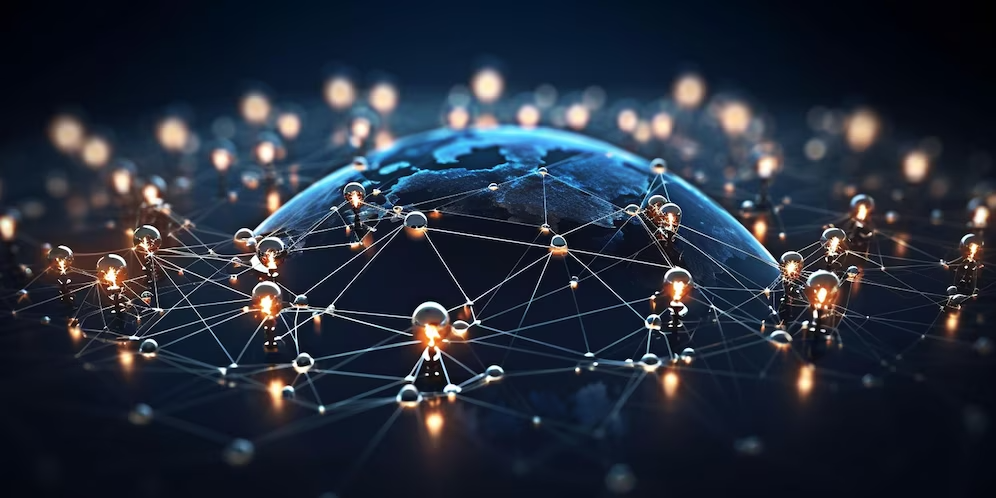 The digital economy thrives on speed, efficiency, and proximity. As billions of devices—from industrial sensors to smart refrigerators—connect to the internet, the traditional model of routing all data to a centralized cloud for processing has become unsustainable. This bottleneck, characterized by high latency and bandwidth strain, is precisely the problem Edge Computing solves.
The digital economy thrives on speed, efficiency, and proximity. As billions of devices—from industrial sensors to smart refrigerators—connect to the internet, the traditional model of routing all data to a centralized cloud for processing has become unsustainable. This bottleneck, characterized by high latency and bandwidth strain, is precisely the problem Edge Computing solves.
Edge computing represents a paradigm shift: it moves data processing, analysis, and storage closer to the source of the data—the ‘edge’ of the network. This strategic decentralization is not just a technological upgrade; it is a fundamental competitive advantage, enabling near real-time decision-making that drives revenue, enhances operational safety, and profoundly transforms the customer experience. For content creators and publishers, understanding this explosive technology niche is key to capturing high-value traffic and maximizing Google AdSense revenue in a market increasingly hungry for sophisticated, forward-looking content.
Defining the Edge: Core Concepts and Architecture
To effectively capitalize on the massive search volume surrounding this topic, a detailed definition of the Edge is necessary. The “edge” isn’t a single device; it’s a diverse continuum of computing resources.
A. Core Architectural Components
The Edge architecture is layered, ensuring scalability and robust performance across various environments.
A. The Central Cloud/Data Center: This remains the repository for long-term storage, deep data analytics (e.g., training massive AI models), and global business logic. It provides the necessary macro-level insights. B. The Near Edge (Regional/Fog Computing): These are micro-data centers or computing hubs located closer to end-users (e.g., in a city or regional network center). They handle data aggregation, initial filtering, and local caching to serve multiple user bases with reduced latency. C. The Far Edge (On-Premise/IoT Edge): This is the crucial layer, located immediately next to the data source. It includes industrial gateways, network routers, smart cameras, on-site servers, and actual Internet of Things (IoT) devices themselves. This layer executes the real-time, mission-critical tasks. D. Edge Gateway: A physical or virtual device that acts as the secure intermediary between the local edge devices (the Far Edge) and the wider network (the Near Edge and Cloud). It’s responsible for translation, security, and data filtering.
B. The Indispensable Metrics: Latency and Bandwidth
The value proposition of Edge Computing can be quantified by two main improvements:
A. Reduced Latency: Latency is the delay before a transfer of data begins following an instruction. In cloud-only models, data might travel thousands of miles. Edge computing reduces this to mere milliseconds. For applications like autonomous vehicles or surgical robotics, this near-zero delay is literally life-saving. B. Optimized Bandwidth Consumption: By processing and filtering data locally, only the most essential, actionable data is sent back to the central cloud. This drastically reduces the volume of data transmitted, cutting bandwidth costs and relieving network congestion.
The Strategic Business Drivers of Edge Adoption
The shift to the Edge isn’t driven by hype; it’s compelled by stringent business requirements across multiple high-value industries.
A. Real-Time Operational Efficiency
In sectors like manufacturing and energy, real-time data processing is the foundation of modern operations.
A. Predictive Maintenance: Industrial IoT sensors on machinery generate massive time-series data. Edge algorithms analyze vibration, temperature, and pressure fluctuations instantly. If an anomaly is detected, the Edge system triggers an alert before a catastrophic failure occurs, saving millions in downtime. This is an unparalleled enhancement over reactive maintenance. B. Manufacturing Quality Control (QC): High-speed cameras capture images of products on an assembly line. An Edge-based computer vision system processes these images immediately—checking for defects—in milliseconds. Sending this constant stream of video to the cloud is impossible; only the Edge can deliver this speed.
B. Safety, Security, and Compliance
For mission-critical applications, the Edge ensures data integrity and adherence to regulatory mandates.
A. Enhanced Data Security: Processing data locally reduces the risk of sensitive information being compromised during transmission over the public internet. This localized control is vital for sectors handling classified or proprietary information. B. Regulatory Compliance (Data Sovereignty): Many regions and industries mandate that certain types of data (e.g., personal health records, financial transactions) must be processed and stored within specific geographic boundaries. Edge deployments allow organizations to strictly adhere to these data sovereignty laws. C. Emergency Response Systems: In a crisis, the reliability of local computing is paramount. Edge systems can function autonomously even if central network connectivity is lost, ensuring continuous operation of vital infrastructure like traffic control or utility grids.
C. The Evolved Customer Experience
Edge computing transforms customer-facing services by enabling highly personalized and immediate interactions.
A. Smart Retail Experiences: Edge systems power smart store technology. Local sensors analyze customer traffic flow, inventory levels, and even process payments and manage digital signage instantly. This leads to features like automated checkout and personalized in-store offers delivered in real-time. B. Immersive Augmented Reality (AR) Applications: AR applications (like virtual try-ons or interactive factory manuals) require extremely low latency to seamlessly overlay digital images onto the real world. The Edge is essential for reducing the delay that would otherwise break the immersion.

Technical Challenges and Mitigation Strategies in Edge Deployments
While the benefits are clear, the architectural complexity of Edge deployments presents unique technical hurdles that must be addressed for successful adoption.
A. Resource Constraints at the Far Edge
Unlike the virtually infinite resources of the cloud, edge devices often have limited power, memory, and processing capabilities.
A. Optimized Software Design: Applications must be designed to be extremely lightweight and efficient. This involves using specialized containerization technologies and microservices architecture optimized for low-resource environments. B. Efficient Data Filtering: Sophisticated algorithms must be implemented at the Edge to prioritize and compress data, ensuring only truly necessary information is transmitted to the cloud, thus conserving limited bandwidth and processing power.
B. Security and Trust Management
A decentralized network inherently presents a larger attack surface, as there are many more endpoints to secure.
A. Zero Trust Architecture: Every device and user, regardless of location (even those at the edge), must be rigorously authenticated and verified before being granted access to network resources. B. Physical Security of Edge Devices: Since edge devices are often deployed in remote or publicly accessible locations, they require robust physical security measures (e.g., tamper-proof hardware) and remote monitoring capabilities.
C. Orchestration and Management Complexity
Managing and updating thousands of geographically dispersed edge devices is far more complex than managing a centralized data center.
A. Automated Provisioning and Deployment: Utilizing DevOps principles and tools for automated deployment, configuration, and software updates across the entire fleet of edge devices is critical for maintaining consistency and security. B. Unified Management Platforms: Centralized management planes (often cloud-based) are required to monitor the health, performance, and security of all edge nodes from a single dashboard, providing visibility across the distributed infrastructure.
Edge Computing’s Synergistic Relationship with Transformative Technologies
The true power of Edge Computing is realized when combined with other breakthrough technologies. This is a crucial area for content, as it captures the intersectional interest of multiple high-value niches.
A. 5G Wireless Technology
5G provides the high-speed, low-latency, and high-density connectivity that the Edge fundamentally relies upon.
A. Massive Machine-Type Communications (mMTC): 5G’s ability to support millions of connected devices per square kilometer enables the widespread deployment of the Industrial IoT (IIoT) that feeds data to the Edge. B. Ultra-Reliable Low-Latency Communication (URLLC): This 5G feature is perfect for mission-critical Edge use cases, such as remote surgery, drone delivery networks, and real-time factory automation, where a millisecond of lag can be disastrous.
B. Artificial Intelligence (AI) at the Edge
AI and Machine Learning (ML) are the ‘brains’ of the Edge, enabling intelligent, autonomous action without cloud intervention.
A. Edge Inference: The resource-intensive training of an ML model (e.g., to recognize a defective part) still happens in the cloud. However, the resulting, compact model can be deployed to the Edge device, where it performs high-speed inference (making a prediction/decision) locally and immediately. B. Federated Learning: This technique trains AI models across multiple decentralized Edge devices without the need to transfer the raw, sensitive data back to a central server. Only the model updates are shared, enhancing privacy and reducing bandwidth.
C. Digital Twins and the Spatial Web
The Edge is essential for creating real-time virtual models of physical assets and systems.
A. Digital Twin Synchronization: An Edge system continuously collects real-time data from a physical asset (e.g., a wind turbine or a factory line). It processes this data instantly and uses it to keep the corresponding Digital Twin (its virtual replica) perfectly synchronized, allowing operators to simulate and predict performance with high accuracy.
The Economics of Edge: Total Cost of Ownership (TCO) and ROI
For businesses, the long-term justification for the Edge lies in the Total Cost of Ownership (TCO) and the ultimate Return on Investment (ROI).
A. TCO Shifting from Bandwidth to Compute
While initial hardware investment at the Edge may be high, the TCO shifts over time due to operational savings. A. Reduced Data Egress Costs: Cloud providers charge substantial fees for data leaving their network (egress). By minimizing the data sent back to the cloud, the Edge provides massive, ongoing savings on these egress costs. B. Optimized Network Infrastructure: Less bandwidth demand from high-volume sensors means organizations can often delay expensive network upgrades, further spreading the TCO advantage.
B. Quantifiable ROI from Edge Use Cases
The ROI from Edge deployments is typically realized through efficiency gains and risk mitigation. A. Downtime Cost Reduction: Preventing a single unplanned shutdown in a large industrial facility (via predictive maintenance) can save hundreds of thousands to millions of dollars, justifying the Edge investment immediately. B. Inventory and Logistics Optimization: Real-time asset tracking and cold-chain monitoring via Edge devices reduce spoilage, inventory loss, and misplacement, leading to a direct and measurable increase in profitability.
Conclusion: The Horizon of Pervasive Computing
Edge Computing is rapidly evolving from a niche concept to a ubiquitous reality. It is the necessary bridge that connects the physical world (IoT) with the virtually infinite power of the cloud (AI). As the demand for instant, intelligent action continues to grow across every major industry—from healthcare to finance to retail—the infrastructure of the Edge will become the single most vital component of the global digital nervous system. Companies that master this decentralized architecture will lead the next wave of automation, efficiency, and innovation. For content publishers, the complexity and business relevance of this subject guarantee high-value traffic, making it a powerful foundation for a robust, long-term SEO and AdSense strategy.



